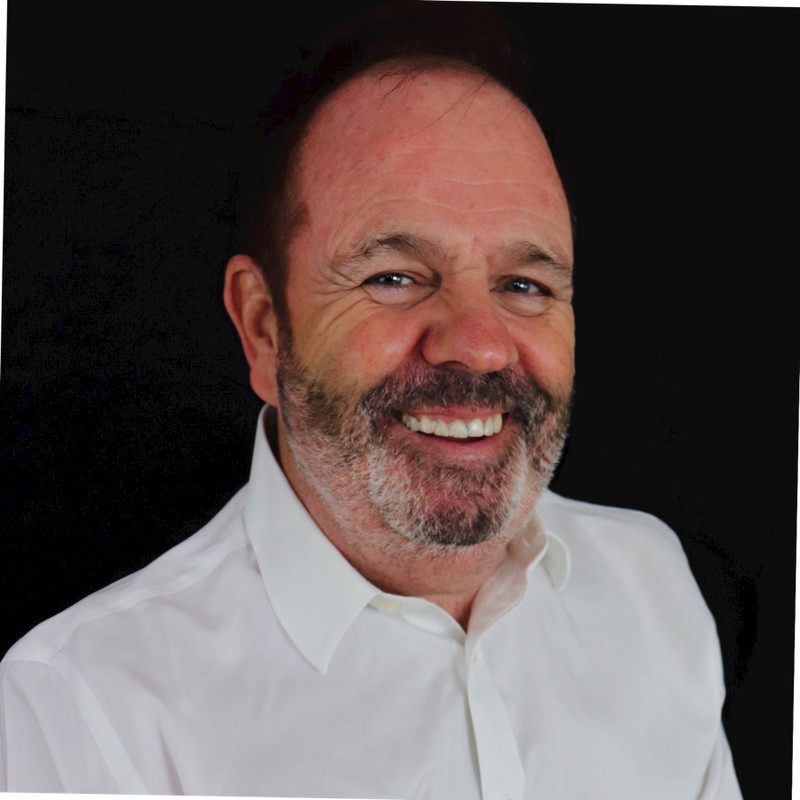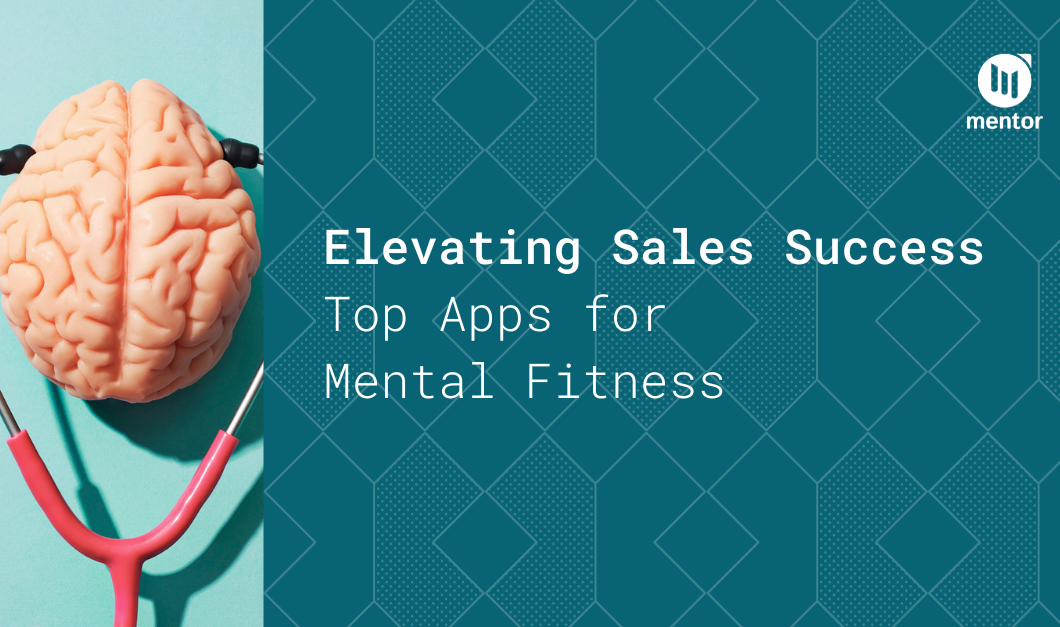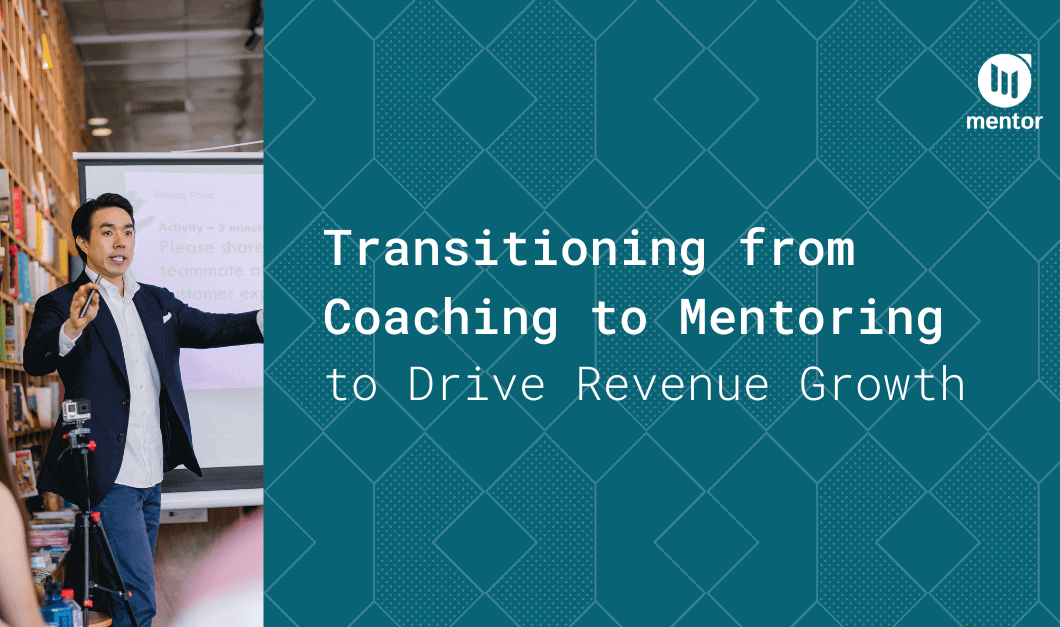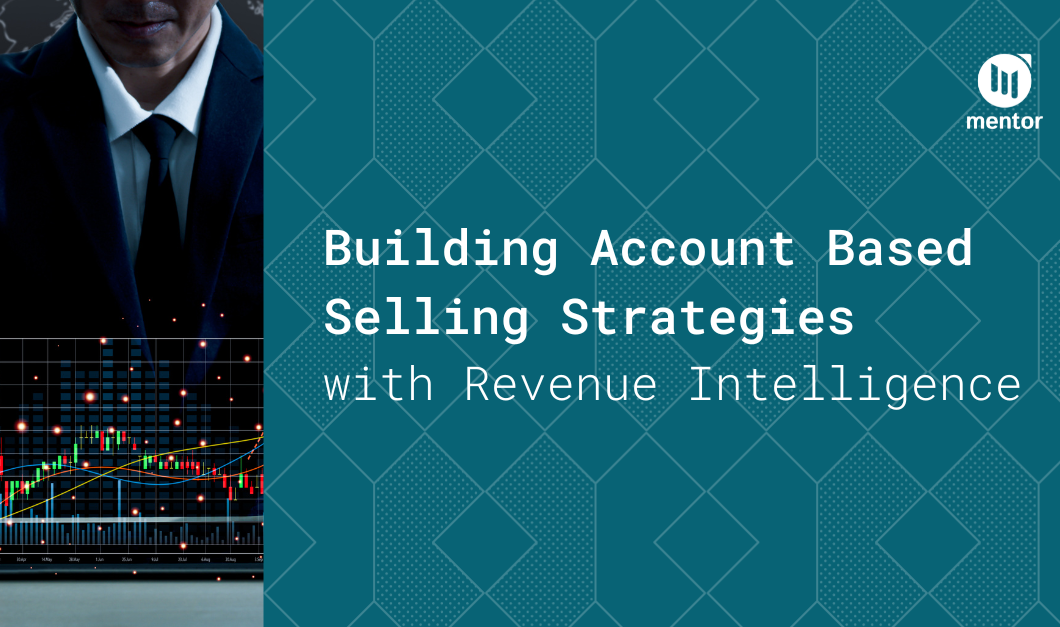In 2020, Mentor Group rolled out a series of powerful, interactive webinars that helped sales leaders at a renowned global technology developer coach and lead their people better from a remote structure, which in turn drove business continuity and performance.
This is a transcript of an interview of Jim McManus (JM), Director and Co-Founder of Mentor Group, and John Phillips (JP), a lead consultant at Mentor Group and a critical part of the project.
We're here to talk about a project we recently did for a global technology developer - Jim, did you want to give a quick overview of what that looked like, and what we were responsible for within that?
JM: What they particularly wanted to do was look at helping their leaders lead and coach their people better in light of the changes in the environment. They'd gone from an in-person structure to a remote management structure, and they wanted to equip their managers with some refreshers and reminders of some skills, tools and techniques to help them. They saw that the webinar was one of the best ways to get to mass volume of leaders, as they have 4,500 leaders globally.
What were some of the pain points that they specifically wanted to address? They wanted to equip people, but was there anything specific they wanted to equip them with?
JM: Not only were they having to manage remotely, they were also having to help their sales people sell remotely, which some of the external salespeople were just not used to doing. So, it was really about helping them change in the new working environments and become more agile in the new conditions. There was also a wellbeing and a care aspect to those changes, to make sure that was going on.
They focused on the coaching primarily though, and they found two topics that were of a particular interest to them - negotiation and storytelling, which served as the primary areas of focus through the four webinars that we delivered.
What do you think would be the key differentiators between what Mentor Group were able to provide and what the rest of the market is doing? What is it that we do that other people wouldn't be able to do as effectively?
JP: That's a big question. The thing we've repeatedly had feedback on is we really understand the challenge of remote and virtual working because we've been doing it for years. Right from the start of the first UK lockdowns, we were able to help our clients make sense of both the personal and business challenges that they faced. Contextualising those two things have been the major difference.
Our clients have also told us again and again that the way that we structure our learning, our communications, or our messaging has really helped them engage and connect with the subject.
JM: I think John is right. I also think that the way that we helped prepare their leaders to act as subject matter experts to bring some realism to the training model allowed for higher interaction with the audience, because it resonated with them. It was great to see their leaders become more and more confident as they went through the webinars, which is down to John and the way he designed the webinars to make it easier for them to be prepared and ready.
Managing the chat functions and the questions they had was critical too, which was run by Matt Webb who was "producing" that side of things. Engaging with people through the live chat to supplement what John was doing over video and audio really made a big difference.
JP: That's a good point, our approach to webinars is not a boilerplate "Here's an expert, listen to them talk for half an hour, 45 minutes, going through slide after slide on how to do things. Our approach is to make our webinars as interactive and engaging as we possibly can. That's not always possible with a large audience, so using multiple voices and faces, and breaking up the content delivery with frequent Q&A sessions is our core way of operating and we've had consistently positive feedback from that approach.
You're not sitting there listening to me talking for a long period of time, there's always something engaging happening or changing. That's what makes our webinars less of a lecture and more of an engaging, interactive experience that you're actively involved in as a listener.
It's always critical to be able to design and deliver webinars and training sessions like these with the right context - how much did our previous relationship with the organisation inform what we were able to deliver?
JM: The trust in the relationship definitely helps with that. People feel like they're in a safe pair of hands working with us, so they're more free to give themselves as leaders to the project. I think they were also surprised by how safe and prepared John made them feel in the readiness, being focused and prepared. For them to be on camera to 500, 600 of their peers, can be quite daunting.
Because of the work that John and Matt did, they felt comfortable that we were bringing out the best of them, making them look good, and the existing partnership we have with them provided that baseline foundation of trust that definitely helped.
Was there anything consciously that you did to further foster or encourage that sense of trust?
JP: For people who aren't in that space of large-scale content delivery, the trick was to get them laser focused on what their input was going to be, on the questions that I was going to ask them - and doing that in advance of the webinars, testing that out and getting them to practice their input, and then refining and "tuning up" their answers.
The more familiar they were with their roles, and even where in the webinar they were going to be involved, they could keep track of what stage the webinar was at as it was unfolding, and they could know "this is what's happening next, they're about to come to me and this is what I'm going to talk about". We really practised and rehearsed that with them, because like Jim said, doing that in front of your peers is a much bigger deal sometimes.
After the first couple of sessions, it quickly became an aspirational thing - people wanted to contribute and wanted to be involved, and I think that was down to the fact that they saw from the first sessions that they were in a safe environment and how well received previous input was.
As someone who delivers content like this frequently, how different is it doing that virtually as opposed to the more familiar or traditional in-person delivery?
JP: Webinars will always be different in that you generally can't see the faces of the people you're delivering to. You might be able to see your co-panellists or the hosts, but you won't see the most important people, the learners. So, for me, you've actually got to deliver it like you're in the room.
You've got to treat it as if you were delivering live, face-to-face. If I'm delivering, I never sit down because if I was running a conference or a workshop, I would never sit down for that. Standing up, your body produces 20% more oxygen, you have more energy in what you do, and the projection of that energy through the screen is absolutely critical for engagement. You have got to act and behave as you would if you were in a live environment.
So, it's about removing the barriers the screen presents mentally as much as physically?
JP: Without a doubt. Getting on your feet to deliver is such a simple step, but it can be that breakthrough to get you in the zone when you're delivering virtually. Just the little movements you can do when you're standing provide a wealth of visual stimulation so you're not just a talking head.
JM: This is where the producer role was critical. Matt as the producer was constantly chatting to participants through the instant messaging function, prompting questions and giving answers, all in the background whilst John was delivering the main content. They didn't see that chat, but every 13, 14 minutes John would go to Matt and ask for a summary of what's happening in the chat.
That allowed that extra level of interaction with the audience to really drive parts of the session, they really felt part of the webinar. Questions from chat could go to John, or some of the leaders as subject matter experts, and it kept things moving and kept people engaged.
It's interesting to see the blurring of the boundaries or structure that technology allows for, generating a constant flow of questions and engagement as opposed to a standard segmented model.
JM: In one of the last webinars, I saw 40 or 50 chat engagements during a single 15 minute section of John delivering the content. There simply wouldn't be the time or the space for those engagements to happen in real time during an in-person session, and those interactions are so valuable. If you feel like you've been listened to, responded to, it makes a massive difference, and we saw the snowball effect of that happen with each webinar we delivered.
JP: Whilst we deal with Q&A within the chat during the sessions, we still also had an open forum at the end of each session where people could ask their questions verbally and get a direct response, which helped add another layer of interaction, and introduced other voices into the webinar. Now the audience is hearing the audience speak, which I think really lent everyone listening a level of equity that they wouldn't have had otherwise.
What feedback did you get from the organisation off the back of these webinars?
JM: Across all five webinars, we got a 93% approval rating, and between 92-95% of participants said that they wanted more information about what we were delivering. That's helped the organisation internally support ongoing training and development with their people. They've also recorded all the sessions, so they're available on demand for people to refer back to. It's become a great asset for them.
.png?width=728&name=MicrosoftTeams-image%20(9).png)
Were there any lessons either of you learned from these webinars that you would carry forward into similar projects in the future?
JM: We always talk about preparation and being ready, and that was particularly true for one of the sessions where whilst the host was delivering, they had a lightning strike outside their house, killed their power completely and they went offline.
In the blink of an eye, Matt stepped in and took over seamlessly for a minute or so before the host got back online. That transition, handling that moment the way he did, really impressed the customer. Just to show it wasn't a fluke, the host got another lightning strike three minutes later, power out, Matt stepped in again.
We didn't plan for a lightning strike, obviously, but everybody knew their roles and knew their content well enough to be able to adapt on the fly and handle a moment like that with virtually no disruption to the flow of the webinar.
So, there were lots of things we learned, but I think that session really drove home the value and importance of preparation and readiness.
JP: Our learning when it comes to delivering virtual events has been significant since everything with the pandemic started. We're constantly refining and sharpening our approach and our methodology. The key lessons from this project really centred around engagement with the audience like we talked about earlier - mix up the voices, mix up the faces, mix up who's delivering what and how they're delivering it. Don't allow webinars to become a static, one-way medium for communication, that's where you start to see engagement drop off all the time.
We've all sat through a bad webinar, where we drop off 15, 20 minutes into an hour-long session, mostly because they were boring - a monotonous voice talking through dull slides that weren't engaging or interesting. Webinars can be a really effective way of sampling key principles into an organisation, they can be a great way to start people on the journey towards deeper learning, but they can only do that if the audience is engaged across the whole webinar. The only way to do that consistently is to mix up the voices, mix up the faces, mix up the structure.
Last thoughts from you both?
JM: Never compromise on readiness. It will always show in the most critical moments, and can either secure or ruin your reputation as a trainer.
JP: When you're dealing with technology, things will go wrong. It's inevitable. That's why it's so important to surround yourself with a team of people you trust that are ready and prepared to step in if and when something does go wrong to right the ship and get everything running smoothly.
Mentor Group have developed a market-leading suite of digital learning solutions that have been specifically designed to meet the needs of the modern learner, and provide you with effective, truly scalable learning solutions. You can find out more about our Digital Learning suite today by clicking on the button below.
You can also watch Mentor Group CEO Chris Norton, CTO James Barton and Head of Business Development Matt Webb in an episode of Chat With Matt as they discuss the benefits of virtual and digital learning in the modern workplace.
.









